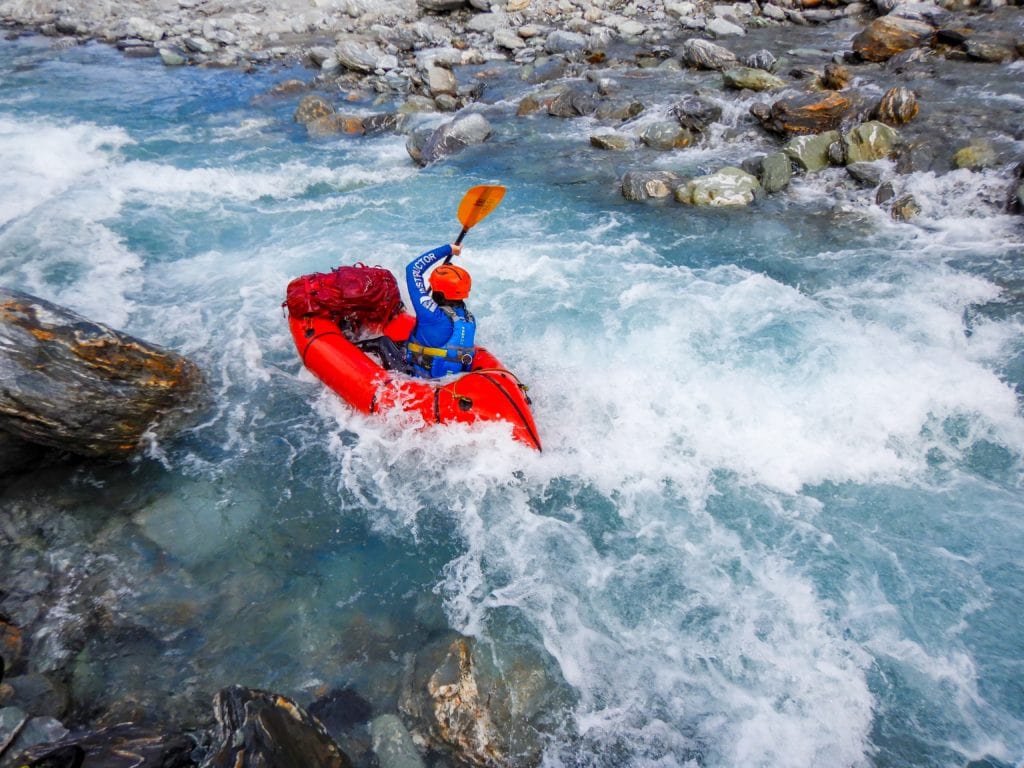
I get asked for packrafting advice a lot. When I started writing this blog it started out as a FAQ type blog. I was hoping to be able to create a comprehensive collection of tips to help people stay safe and improve as packrafter. However the more I wrote the more I realised this was probably an unrealistic ambition. There literally is no substitute for face to face coaching or a course. There’s some nuggets of what I hope is wisdom below. I hope it provokes a little thought and starts a few conversations.
Many people find packrafting through a love of remote backcountry travel. Maybe you’re a passionate hiker or bikepacker. Maybe packrafts are simply a means to accessing a remote mountain to climb or canyon to explore. The fact is that many of us are drawn enthusiastically towards the concept of remote river travel ,but very few new packrafters are experienced river runners. Read below as I share some thoughts and hard learnt lessons from my career river guiding. You’ve caught the bug, you’ve bought a boat…. Now what?!
Read on for tips and a rundown of the most important things you will learn in our Packrafting 101 Course Overview:
Packrafts allow us to undertake incredible journeys into the backcountry like never before. New innovations and designs have lead to the development of some incredibly capable whitewater boats too; the possibilities are endless! It’s seductive.
Huw Miles – Packrafting Queenstown
Rigging yourself up
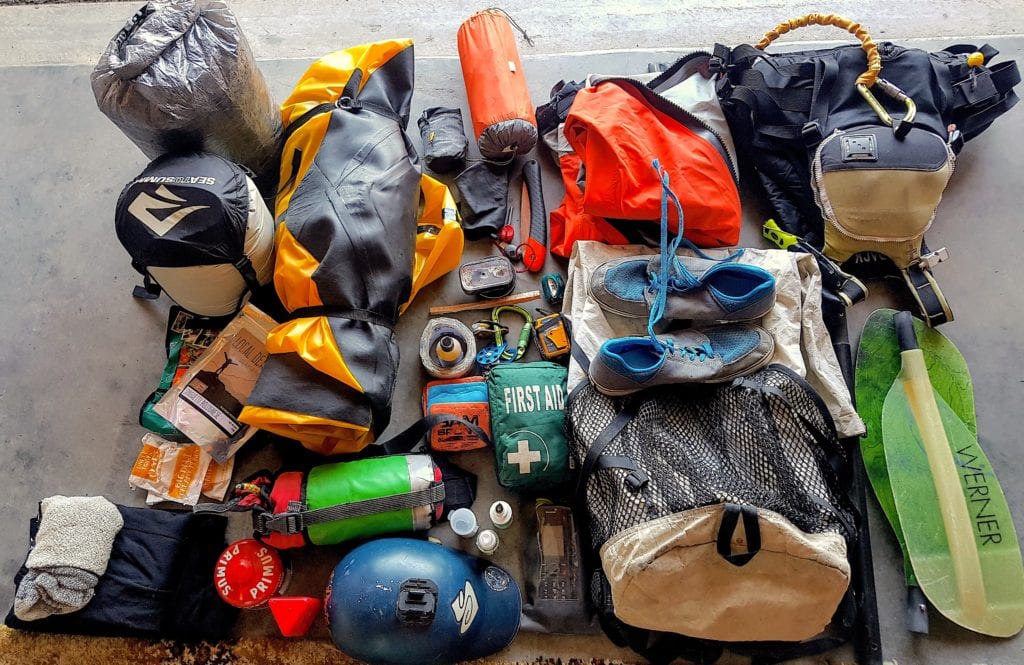
An important aspect to consider is rigging your boat up and equipping yourself correctly. You’ll hear this repeated over and over as you continue your paddling career but the old adage goes: “Dress for a swim, rig for a flip.”
What this means is dressing for the water you are paddling. Don’t fall into the trap of dressing purely for the air temperature. Consider how you’d feel if you were swimming. That might mean dressing in a wetsuit, or it might mean a dry suit. There are other factors to consider such as cost of course and often you are forced to make compromises with your gear in packrafting. For example, a full set of kayaking gear might be too heavy for you to pack in addition to your hiking gear, jet boil and comfortable three-man tent food etc. You’ll have to make decisions, about what you take with you on remote trips into the backcountry. Maybe it means leaving that jet boil behind and taking your good ol’ faithful pocket rocket stove. Perhaps you’ll elect to take a bivvy bag or a tarp instead of your roomy tent. You might decide to take one set of dry clothes to sleep in and one to hike in and wear under your dry suit. Maybe you decide that your drysuit is also going to be your wet weather gear. Whatever you decide, be sure you are compromising on comfort, not safety.
The human body loses body heat twenty-five times quicker in water than through the air, compromising on the clothes you wear could be a big deal and in the worst case, lead to hypothermia or even a fatality. Dress for the swim. This includes following clean line principles: no loose loops, knots or non-locking carabiners. There are plenty of articles you can read to help you make an informed choice about the gear you paddle in.
Rigging up your packraft
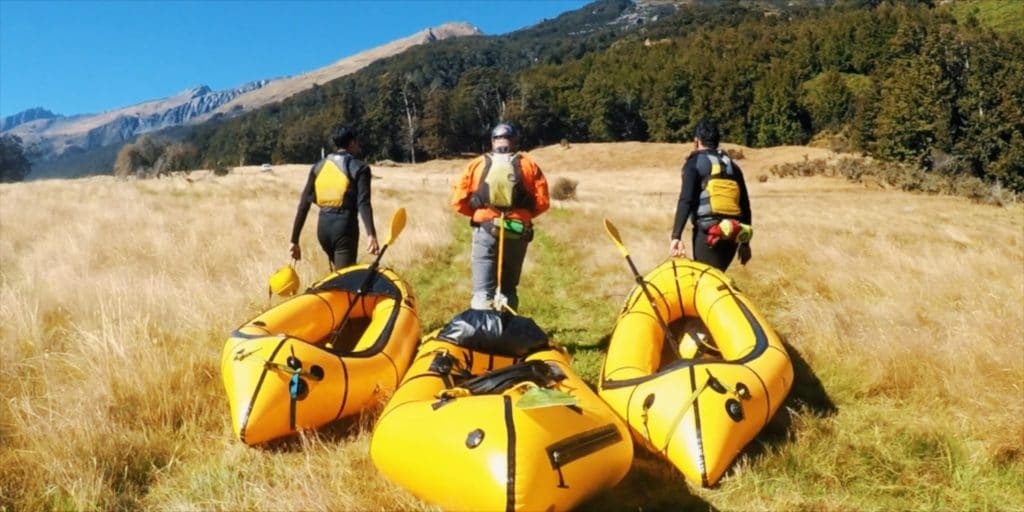
Rigging for a flip means following many of the principles of clean lines too. You’ll definitely want to put some perimeter lines on your packrafts so that it’s easier to rescue in the event of a flip. You’ll most likely want to leave the side tubes clear of these lines to reduce the risk of entanglement in the case of a swim and to facilitate deep water re-entry.
Another hard learned lesson for river runners the world over is that if it’s not attached, it’s likely to be lost in a swim. If it’s important, synch that shit down! Make sure bags are attached strap side down to present the cleanest bow possible and ensure bags are not only attached, but really secure. Better yet, buy a boat with a TIZIP. If you are flipping your boat back over, any bag – especially a loose bag – acts as a keel. After a long swim in cold water, having been separated from your team, you might only have the energy for two or three attempts to flip your packraft back over. Having your bags tight and not slopping around could make the difference between success and failure.
So you’ve got your packing list dialed in. Your packraft is shipshape and well-rigged. The next step? Learning how to paddle properly and understand the anatomy of rivers.
Basic paddling skills
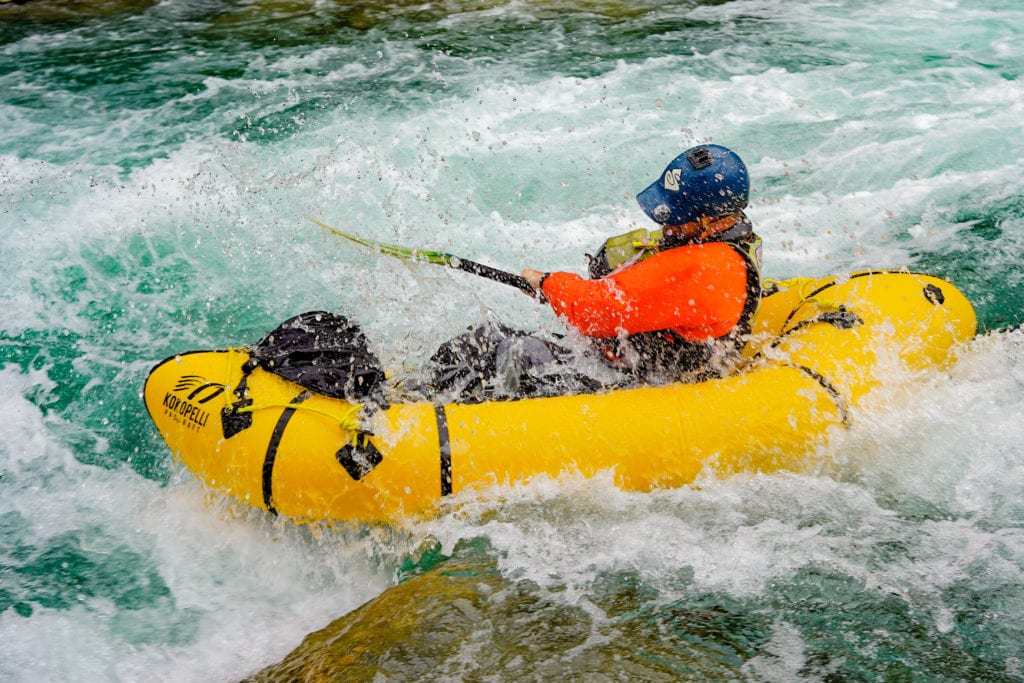
Avoid the trap of exclusively learning from Youtube. Whilst you’re watching, remember: Youtube isn’t going to be watching you. You’ll get zero feedback and there is literally no substitute for taking a course or finding a paddling coach to work with.
Invest in yourself with the Packraft 101 course and it will be the best value purchase in your whole paddling career. Whilst packrafts may get replaced with the latest and greatest model or a new lighter paddle gets introduced, knowledge will never go out of style. Learn good technique, understand how rivers work and practice, practice, practice. Knowledge may not fade but some skills, particularly rescue skills, are perishable and will need refreshing to keep yourself sharp. Once you learn how rivers work and have a solid forward stroke, sweep stroke and maybe some technical strokes like a brace or a boof, you’ll be able to identify clear lines and formulate plans to run rivers.
Reading the river
-1024x768.jpg)
Learn not only what river features are, but how they will affect your boat. This course will teach you to understand how different features should influence your behavior, stroke selection or line choice. You should always have a plan on for a rapid and be active in your execution of this plan. Don’t float rivers, boat rivers. You should, at any given point on a river trip, be able to justify your position, speed, angle, stroke selection and edge. Keep an active blade in the water as much as you can. Rivers are unforgiving, uncaring environments. You’ll need to stay switched on, looking down stream and planning descents according to the information you’re gathering from the river, geology and river features.
Make a plan… but have a contingency.
The way I teach this is to consider what the main hazard is. What is mostly likely to go wrong? What’s the thing you’re trying to avoid? If you don’t avoid the thing or miss your stroke, where on the rapid are you likely to be and what will be your backup plan? These questions will also help you make good choices about whether you walk a rapid or run it. Look at the features on the river and work out how you can use them.
Allow yourself time to progress
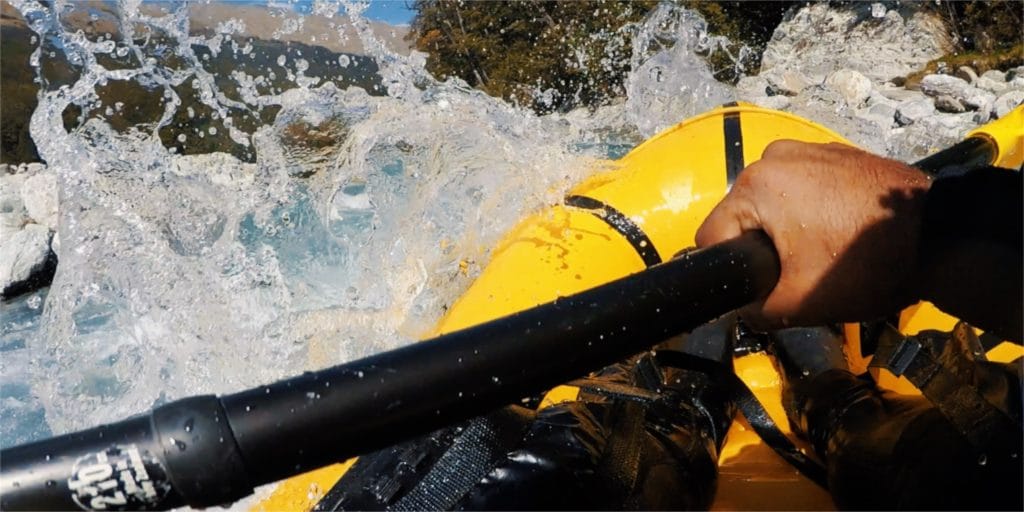
As paddlers progress, the most common trap I see them falling into is advancing through the grades too quickly. The thought process goes something like this:
Paddler: “OK, I’ve got the basics, I feel really comfortable on flat water, I wanna try something a bit more exciting.”
[Paddles through a grade 1 rapid, doesn’t flip.]
Paddler: “Nailed that, lets progress, lemme find a grade II.”
[Paddles straight through a grade II, doesn’t flip.]
Paddler: “I’m killing this, bring on the grade III.”
[Paddles straight through a grade III, doesn’t flip.]
Paddler: “This is sick, it’s only my second day paddling and it turns out I’m already a grade III paddler.”
Maybe you’ve met the paddler described above. He’s the guy who describes himself as a grade III paddler when you’re in the bar, but asks what a wave train is when you start discussing lines on the river. Just because you have managed to get yourself down a certain rapid, it does not make you a grade ‘X’ paddler. Are you fully under control on that rapid? Can you stop at will in any eddy on the rapid? Can you break out into the flow? Can you make that S-turn? Maybe not.
Progression shouldn’t be just rattling through the grades. Someday you will flip and realize how out of your depth you are. That could easily be on a grade II. Good progression should be making easy water difficult. Sure you’ve run your local grade II sections a dozen times, but have you ever hit that tricky eddy or tried to make tough move? That’s progressing. Gaining full control and mastery of your boat and learning new technical paddle strokes. Be honest with yourself and work towards improving your technical ability. Don’t just bomb rapids. Don’t be that paddler.
“Good progression should be making easy water difficult“
Skill yourself up & find yourself a crew
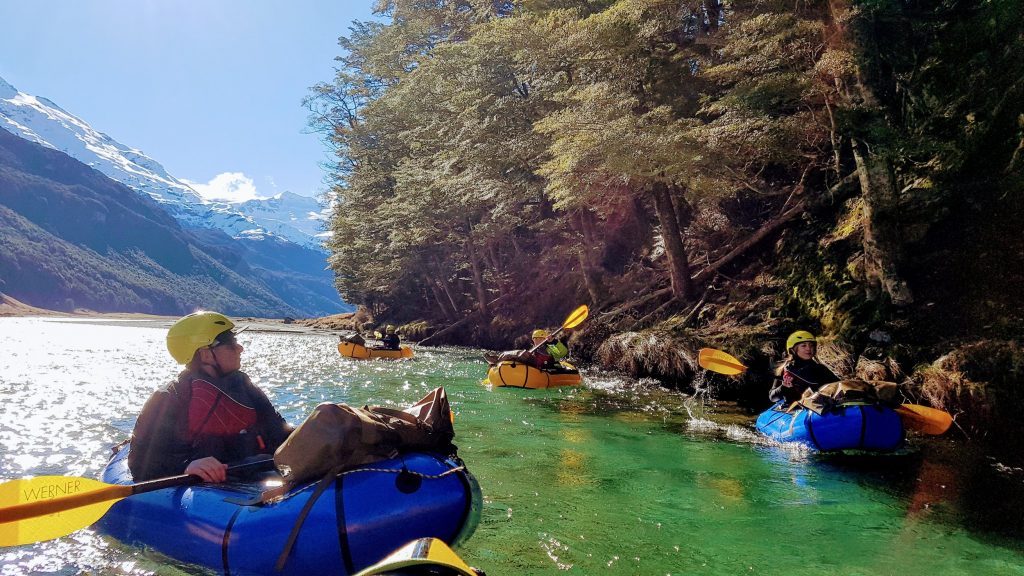
So you’ve developed as a paddler; you’re no longer the newb and you get how rivers work. Awesome!! Now how do you progress to being a good person to go paddling with? There is a huge difference between being a good paddler and being a good person to paddle with , and this should inform your choices as you start to assemble your paddling crew (more on this later). There are a couple of things you can do to make sure your crew is getting the most out of paddling with you.
Get some rescue training
This needn’t be full bells and whistles if it’s your first rescue course, (and in fact it’s better if it’s not) but a grasp of the fundamentals of river rescue and safety is important. In river running, there is an unwritten agreement with whoever you’re paddling with: “You watch my back and I’ll watch yours.” Whether you are aware of this or not, the chances are those more experienced guys you have been paddling with for the last few months, have taken on the responsibility of watching your ass. As you progress, it’s your chance to not only to take some of that burden off those mentors, but also upskilling yourself to take on that mentor mantle.
“In river running, there is an unwritten agreement with whoever you’re paddling with: “You watch my back and I’ll watch yours.”
Learn how to swim in whitewater
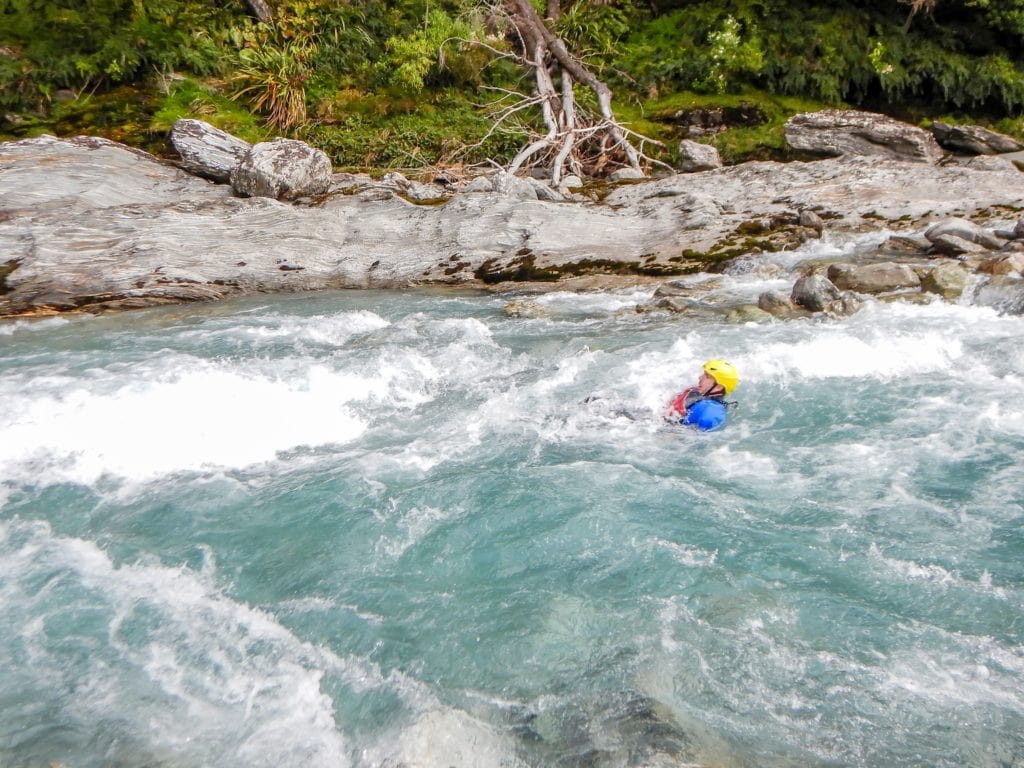
Understand when to be defensive and when you need to be aggressive. Practice your throw bagging. Get efficient with your recoiling and second throws. Get your deep water re-entry dialed and develop your river running tactics as a team. It’s another cliché, but these skills become tools for your tool box. They aren’t prescriptive and exhaustive but should give you some options to call upon when things don’t go according to plan.
Find a professional & train until you understand the nuances of rescues
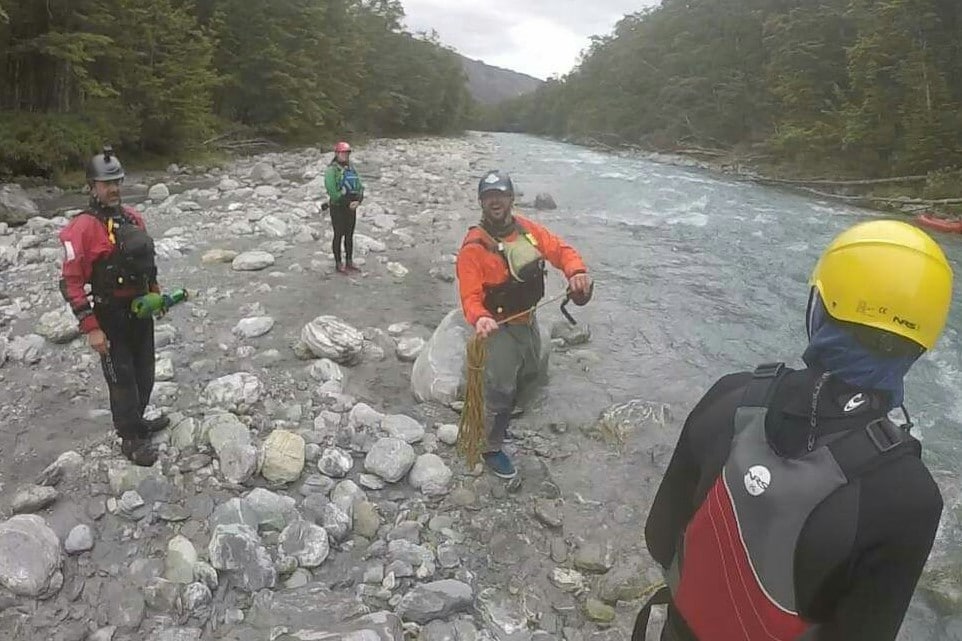
Beware of anyone talking in absolutes, every rescue is different and will need fresh consideration, often in a split second, to come up with an appropriate solution. In the event of your buddy flipping for example, it may not always be the most effective rescue to focus on the swimmer first. If he’s in a nice calm pool, grinning from ear to ear, but his boat is just about to smash through the next rapid, your priority may be to rescue the boat. In wild environments you need to treat rescues like triage. What is killing them first? Is it the swim? Probably not, he’s in calm water, seems happy and free from discomfort. What happens though if his boat drifts off? Are the tents/food/warm clothing or emergency communications device on that boat? If so, what is killing him first might be hypothermia/exposure or starvation. Maybe there’s medication he needs drifting off down stream. Learn a range of fundamental rescue approaches and techniques and learn how/when to use them.
Practice your rescue skills as a team
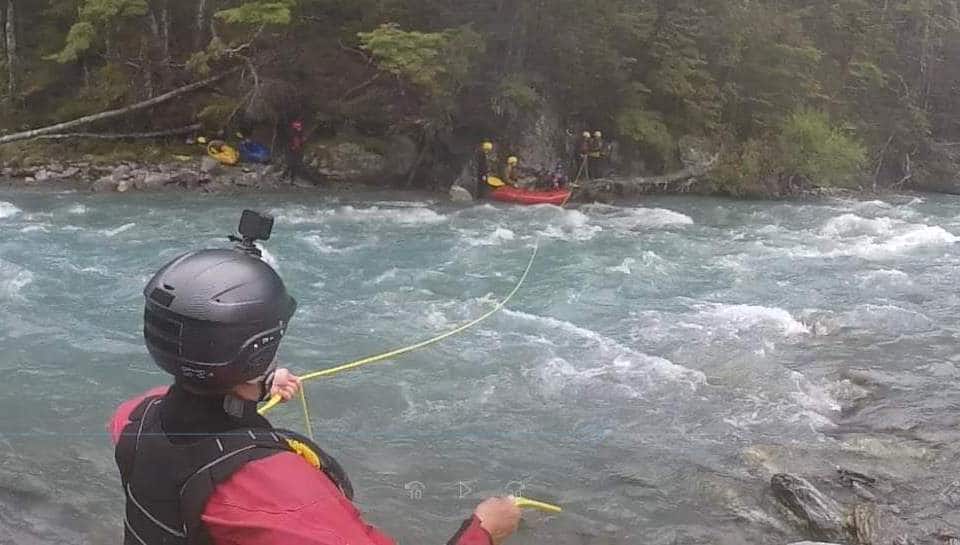
Skills fade. Why not practice a deep water re-entry after every run? After all, you’re about to get changed; warm and dry right? Why not toss a throw bag around camp? It could be a game, doesn’t have to be serious, but it will keep that muscle memory fresh and your hand eye coordination on point.
Build a team of people to paddle with. Practice together, get some river miles under your belt and build that trust. Packrafting is not just aquatic backpacking; it’s not a solo sport. You are so limited to what you can do if shit hits the fan on your own. Besides, sharing experiences like long remote journeys with other people can be a profound and joyous experience. If you can develop a good squad with similar outlooks to boating, you’ll never be short of people to go on missions with. Join groups and forums, better yet attend round ups and courses. Make connections in far flung places or develop the scene around your local rivers. The more people you share your adventures with, the faster you will learn and the greater likelihood you’ll get invited on more missions. If you’ve taken your time to develop yourself as a packrafter, you have the opportunity to influence the paddling culture of your crew. This not only helps keep people safe, but it also helps safeguard the reputation of packrafters everywhere.
The final point I’ll leave you with may sound like a really simple one. But I think it’s one that will make the biggest difference to your development and will separate the wheat from the chaff.
Reflect on what you’ve done
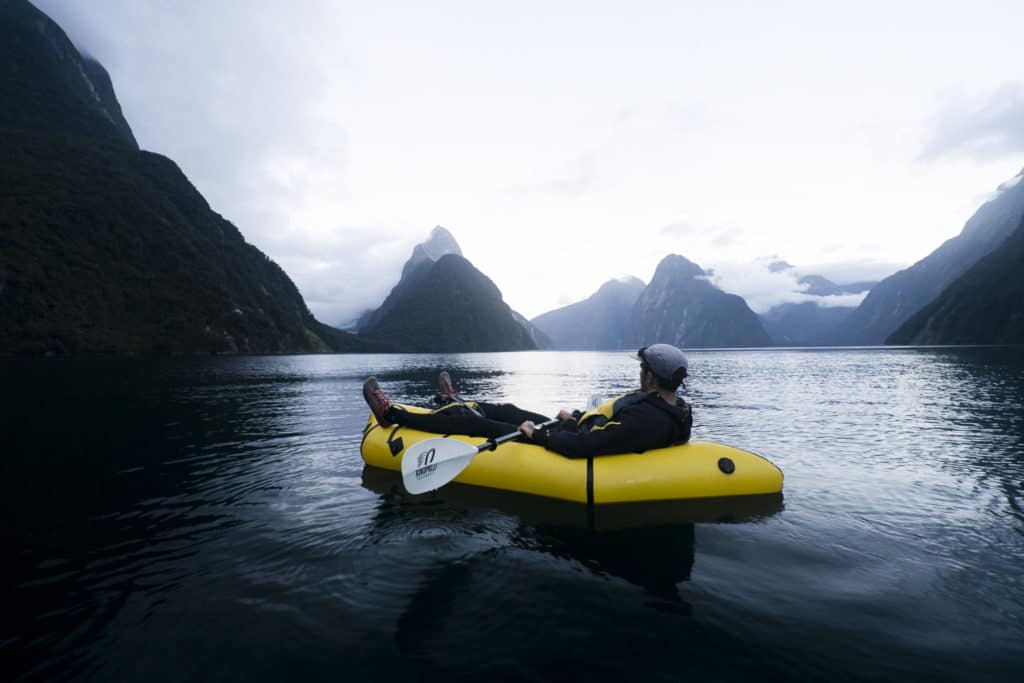
It’s another easy trap to fall into; too often we are all guilty of finishing a trip or even running a rapid and the most reflection we’ll do is turning round and thinking “well that was fun”. Learning is all about experience plus reflection. The way to squeeze every last drop out of your river miles is to critique your run. Were you happy with your line? What could you have done better? How did that dynamic stern rudder feel when you were breaking out of that eddy? Did you carry enough speed across the current?
In sports science we often talk about having knowledge of results and knowledge of performance as crucial tools for development. Knowledge of results is often obvious. Did you achieve what you wanted to? Did you swim? Did you nail that line? Those things are known with very little reflection. The knowledge of performance comes from really breaking down what you’ve done and thinking about all the processes that occur to achieve those results. That requires more reflection. Film yourself if you can. Watch yourself on playback; how does your boof stroke look compared to (insert packrafting idol’s name here)? Be honest with yourself and work hard on maintaining that humble beginner mindset. The more you know, the more you know you don’t know. You know?
Thanks for reading. Hopefully you’ve come away with a few things to think about. If you’d like to learn more, we’d love to see you on our Packrafting 101 Course.
Above all, stay safe, paddle hard, take it seriously and enjoy yourselves out there. You know how to tell who the best packrafter on the river is? He’s the one smiling the most!


I agree that it’s important to not always learn everything from Youtube. Although it’s a great resource, it shouldn’t be your main source of knowledge. My family is going white water rafting soon and we want to stay safe on the water so I’ll try to find someone that has the experience to teach us what to do.
Youtube is so limited huh. We do everything we can to keep the cost of training down so that people don’t have to rely on potentially unreliable and unqualified person on the internet trying to teach them remotely. It’s definitely suboptimal.